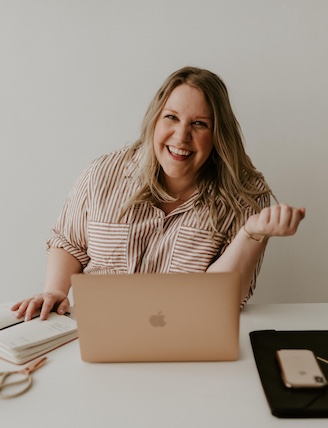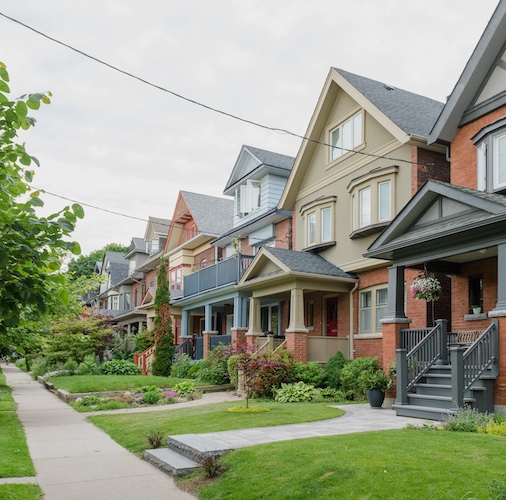Down payment assistance programs and grants: What they are and how they work
Feb 12, 2025
•5-minute read
Effective November 16, 2025, Fannie Mae and Freddie Mac are removing the minimum credit score requirement from their conventional loan eligibility guidelines. Loan approval will instead be based on an evaluation of overall credit risk factors.
Making a down payment is often one of the biggest steps toward turning your dream of homeownership into a reality.
This is why it’s important to know what you might qualify for in down payment assistance courtesy of a government agency or private organization. Opportunities for down payment assistance are especially common among first-time home buyers.
Understanding exactly what home down payment assistance is, how it works, and the different options available can help you receive it.
What is down payment assistance?
Down payment assistance helps you cover your down payment as a first-time home buyer or repeat buyer who qualifies for this type of financial aid. When you buy a home, you’ll usually have to put money down that’s equal to a percentage of the final purchase price. This is called your down payment.
The amount you’ll need will vary, and some mortgage programs don’t require a down payment at all. Having this upfront cash on hand may not be easy for everyone, which is why down payment assistance grants, loans and programs exist.
Down payment assistance qualifications
The two most common down payment assistance requirements are a minimum credit score of 620 and not exceeding a certain income limit. Many programs also consider your debt-to-income ratio (DTI), which measures your monthly debt obligations against your gross monthly income.
Here are some other common requirements, which vary by program:
- The home must be in a specific locale or county.
- You must be a first-time home buyer.
- You must attend a class on home buying and finances.
- You must live in the home for a certain number of years (often 3 – 10).
Who qualifies as a first-time home buyer?
Most government and charity programs have strict rules for who meets the criteria of “first-time home buyer.” If you haven’t owned a home in the last 3 years, most state, federal, local government and nonprofit programs consider you a first-time home buyer even if you owned a home before that 3-year period.
To qualify for down payment assistance, you also typically can’t own any rental or investment properties.
How does down payment assistance work?
Down payment assistance comes in the form of grants, loans and other programs. In some cases, the assistance is reserved only for borrowers who qualify as first-time home buyers.
Down payment assistance programs are run by various organizations, including the U.S. Department of Housing and Urban Development (HUD), local and state housing authorities, and nonprofits.
Household income and credit history determine eligibility for down payment assistance, with requirements varying by state and program. You’ll typically need to apply for assistance by submitting a formal application, and sometimes you’re also required to attend a training or a home buyer education course on the mortgage process and maintaining finances.
How much assistance can I receive?
How much money you’re awarded will depend at least partly on the program. Some programs offer a percentage based on the home’s sale price, while others cap assistance at a particular dollar amount.
When looking at programs to apply for, research their requirements. Also, see whether it’s a grant or a loan and how much assistance you can receive.
In addition, you should be sure the down payment assistance you’re applying for will be acceptable to your lender.
Types of down payment assistance loans and programs
Most down payment assistance comes in the form of first-time home buyer grants and loans offered at the state and local levels. However, funds are available from the private sector and nonprofit organizations in some places.
Grants
The most valuable form of down payment assistance is the grant. That’s because grants provide money that homeowners never have to repay since it’s considered a gift.
Keep in mind that some programs labeled as grants by the organization providing the funding may actually create a second lien on your home.
Forgivable loans (at 0% interest)
Forgivable mortgage loans are second mortgages you won’t have to pay back as long as you stay in a home for a set number of years. This second mortgage will usually be large enough to cover your down payment.
These loans have an interest rate of 0%. Participating lenders will forgive them – meaning that owners won’t have to pay them back – after a certain number of years. You’ll have to repay these loans if you move before the forgiveness period ends.
Deferred-payment loans (at 0% interest)
You might also qualify for a second mortgage with a deferred payment. This second mortgage is typically for a loan amount large enough to cover your down payment. And you don’t have to repay it until you move, sell, refinance or pay down your first mortgage.
Deferred-payment loans are never forgiven, so you’ll have to repay them if you ever leave your home. You’ll usually cover the repayment of the loan through the proceeds from the sale of your residence.
Low-interest loans
Your lender or another organization might offer you the opportunity to take out a second mortgage loan with a low interest rate at the same time your first mortgage is finalized. You can use the funds from this loan to cover your down payment.
You’ll have to repay this loan in installments – usually when you make your monthly payments on your first loan. This means you’ll be making two monthly mortgage payments.
Matched savings programs
Matched savings programs, otherwise known as individual development accounts, are another way for homeowners to get help on their down payment. With these home buyer programs, prospective home buyers deposit money into an account with a bank, government agency or community organization.
That institution agrees to match however much the buyer deposits. The buyer can then use the total funds to help cover their down payment.
Ways to find down payment assistance programs
Wondering how to find a down payment assistance program? Check out these options:
- Research national programs: HUD has a list of local home buying programs by state.
- Research the programs available in your area: Simply searching online for “down payment assistance” with your city’s name can help you connect with local programs.
- Ask a mortgage lender: Ask potential lenders if they work with specific down payment assistance programs.
- Use online resources: Online resources like DownPaymentResource.com can help match you with local programs. They have information on the 2,000+ homeownership programs.
Before moving forward, don’t forget to find out if your mortgage lender works with the specific down payment assistance program you’re interested in.
How long does it take to get down payment assistance?
The amount of time it takes to get down payment assistance depends on the program and the type of assistance. Each state offers its own programs, as do cities and organizations. These programs move at a speed that depends on their size and the demand for them.
While the timeline varies, expect a relatively long process. As soon as you begin shopping, start researching down payment assistance program options to get the ball rolling.
Will down payment assistance affect my closing timeline?
It’s important to know that it may take longer to close on your home if you apply for down payment assistance. The assistance program must work with your lender to secure the loan and the down payment funds. This can add time to the closing process, depending on how quickly the down payment assistance program acts.
The bottom line: You have options for assistance
before focusing on how much money you need for a down payment and whether you’ll need assistance to cover it, start the process of getting preapproved for a mortgage. That way, you know how much house you can afford before saving up for a down payment.
It’s possible to qualify for a conventional mortgage with a down payment as low as 3% of the purchase price. However, if you need help coming up with the money, the down payment assistance programs that community organizations, government agencies and local lenders offer could help you clear this financial hurdle.
Are you ready to embark on the home buying journey? Take action and start your mortgage application with the Home Loan Experts at Rocket Mortgage®.
1 Clients who are current renters will receive a lender credit toward closing equivalent to 10% of the total amount of their 12-month current rental payment, up to $5,000. Current renters are defined as individuals who are currently under a lease agreement. Offer only valid on primary residences. Offer valid only through retail channels and on loans that are locked on or after February 11, 2025. Offer not available for Non-Occupant Co-Clients. Offer not available for partnerships. Offer not valid on Jumbo loans, Schwab products or previously locked or closed loans. Offer is nontransferable. Offer is not valid with any other discounts or promotions. Additional restrictions/conditions apply. Rocket Mortgage reserves the right to modify/cancel this offer at any time. This is not a commitment to lend.

Miranda Crace
Miranda Crace is a Senior Section Editor for the Rocket Companies, bringing a wealth of knowledge about mortgages, personal finance, real estate, and personal loans for over 10 years. Miranda is dedicated to advancing financial literacy and empowering individuals to achieve their financial and homeownership goals. She graduated from Wayne State University where she studied PR Writing, Film Production, and Film Editing. Her creative talents shine through her contributions to the popular video series "Home Lore" and "The Red Desk," which were nominated for the prestigious Shorty Awards. In her spare time, Miranda enjoys traveling, actively engages in the entrepreneurial community, and savors a perfectly brewed cup of coffee.
Related resources
8-minute read
Home buying checklist for first-time home buyers
Starting the process of buying your first home? Use our extensive first-time home buyer checklist to help you prepare and ensure you don't miss a step.
Read more

8-minute read
How to buy a house with no money down
Some mortgages allow you to buy a house with no money down. Learn how to buy a house with n...
Read more

8-minute read
Different types of mortgages and how they work
There is a home loan for everyone, but which type of mortgage is best for you? Use this article to understand the types of home loans and how they work.
Read more